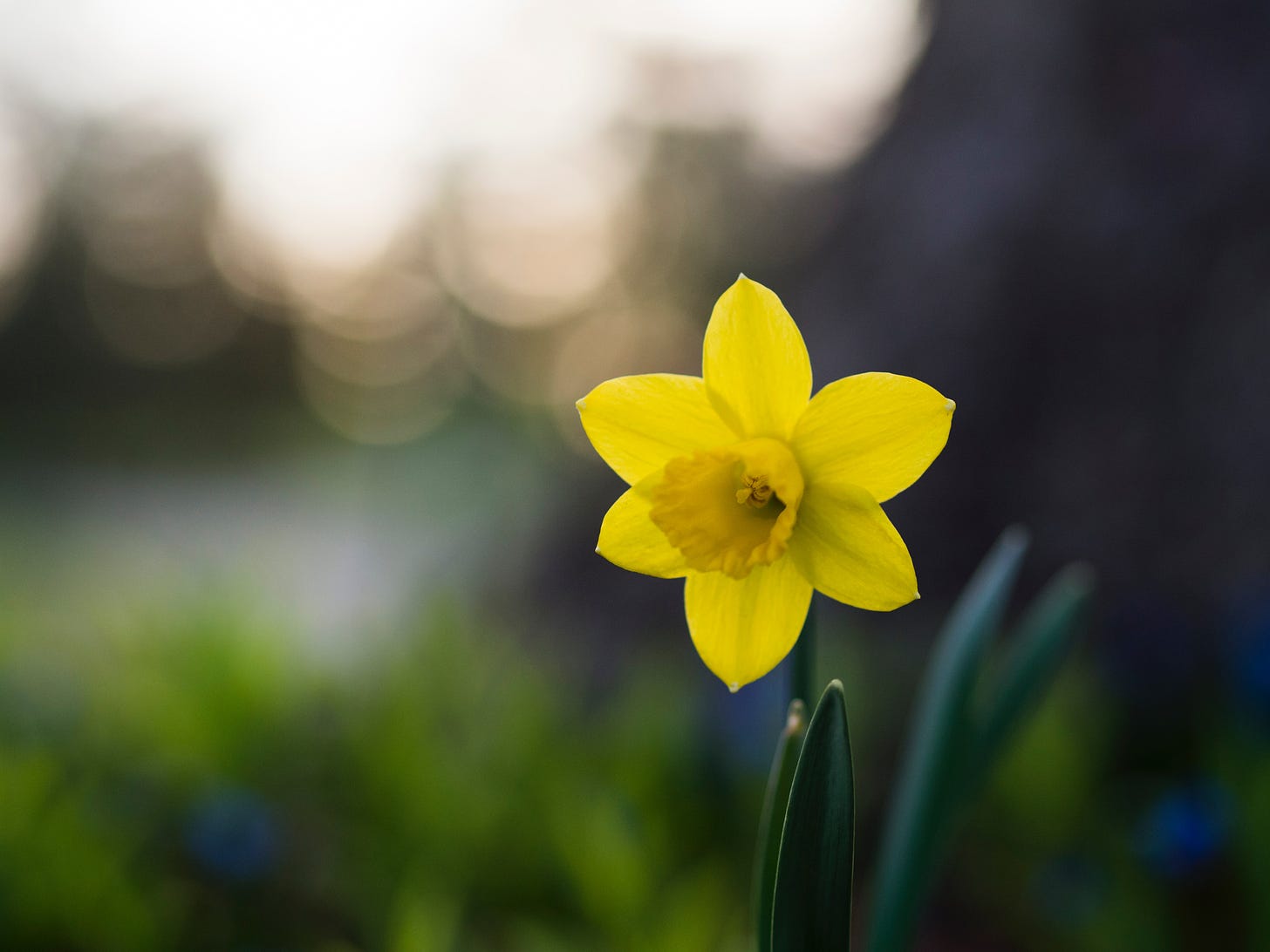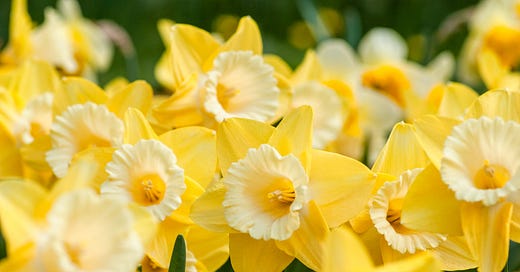Photo by Yoksel 🌿 Zok on Unsplash
there are, on this planet alone, something like two
million naturally occurring sweet things
Even though February is the briefest of months, it taxes me more than day-heavy months. It’s the false flag of time. A half dozen times I thought surely February was over, but then it never was. Now it’s finally escaped back into the calendar, and I think, “where did February go?”
We’ve had no snow days in Kentucky, and the weather has been nauseatingly warm. Nauseatingly dangerous like a baby dancing on the edge of the alligator pit. I want to snatch back the February of snow storms and freezing temps, not the confused daffodils whipping in balmy 70 mph winds. Is this the part of climate change where we mourn the familiar disasters of the past? No snowbound futures? Every day the howling wind?
Here in the faux-winter of my discontent, I’ve been working on a book about place-based literacy. Over the next month, I’ll be floating activities out to Your High School Creative Writing Teacher friends and neighbors, so gird your loins for free lesson plans. In the meantime, here’s an activity I did with my students last week. In a crazy week of floods and wind and storms, we decided to concentrate on all the sweet things.
We read Ross Gay’s poem Sorrow Is Not My Name and I asked students to do a reading activity that allows them to engage with the poem from the purely human, purely appreciative, purely celebratory posture of call and response.
The poet calls out. How do you respond?
According to MasterClass, call and response in music is “a compositional technique that works similarly to a conversation.” One phrase of the music calls out and the second phrase responds or comments on the first. This is the posture we adopt when reading poetry.
Read the poem.
Circle or underline four words, lines, phrases or images that call out to you.
Respond appropriately in the white space around the poem.
Any way you respond is valid, but respond you must. Identify what you are thinking and feeling as you read and translate into a response, written in the white space around the poem. Some students say they don’t know how to do that, so here’s a list of great ways you might respond. In the white space around the poem. . .
Ask a Question
ask a question as if you were writing a note to the poet
ask a question as if you were writing a note to the universe
ask a question as if you were writing a note to yourself or some version of yourself
Make a Connection
make a connection with a memory
make a connection with a person
make a connection with a song
make a connection with an emotion
make a connection with an historical event
make a connection with a personal event
React with Emojis
React with laughter
React with outrage
React with love
React with any emotion you feel
Celebrate with Delight
Celebrate a word you love
Celebrate an image you love
Celebrate a phrase you love
Celebrate a line you love
Engage with Confusion
Engage with a word you don’t understand
Engage with an image you don’t understand
Engage with a phrase you don’t understand
Engage with a line you don’t understand

Extension Exercise
Almost every student in the class had some kind of reaction to “there are, on this planet alone, something like two/million naturally occurring sweet things,” so we transferred that line to a clean sheet of paper and started our own list poem, naming a dozen ‘naturally occurring sweet things’. The only rules were the list needed to be personal and profound. I will publish some of these in a few days!





Also, I came across Confidence to Write and ordered it immediately. Love the cover!
Hi Liz, I took the ways to connect to the poem and put them in a table called conversation with a poem and added my own category which I’m calling freestyle- I’ll print a double sided sheet with that on one side, poem on the other -going to try it Thursday with my nat lit class and see how it goes